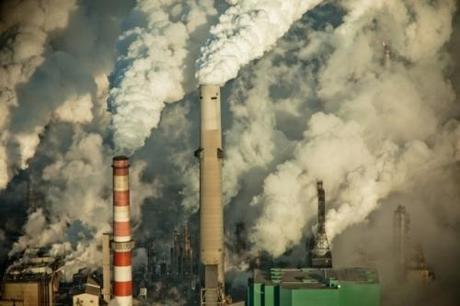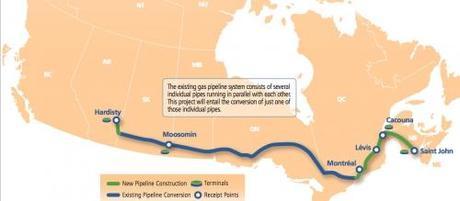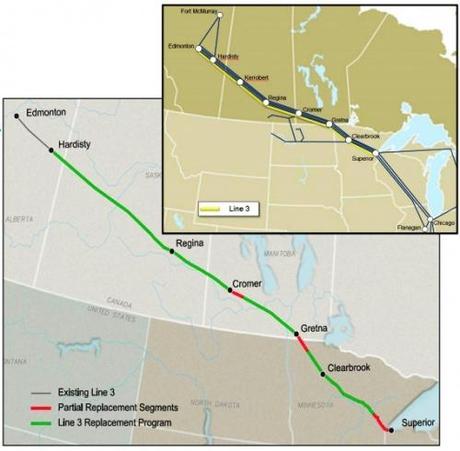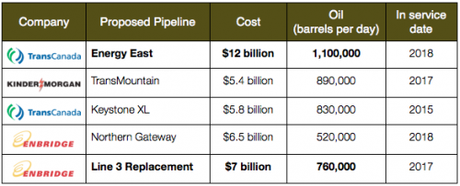by Mychaylo Prystupa / Vancouver Observer

Fort McMurray, Alberta tar sands operations. Photo: Kris Krug
In a dizzying week of oil announcements, two new giant west-to-east pipelines passed key milestones. If built, the pipelines would rapidly expand Alberta’s oil sands, cause massive environmental impacts, and trigger thousands of new jobs, according to several observers.
The first project – TransCanada’s Energy East pipeline – would be the largest oil sands pipeline in North America – a continent-wrapping 4,500-km line to carry Alberta’s oil to Montreal, Quebec City and Saint John.
TransCanada filed its project description with the National Energy Board Tuesday – the first step in the approval process.
“Energy East is a critical infrastructure project for all Canadians because it will enhance our country’s energy security, allow us to receive greater value for our important natural resources…” said TransCanada’s CEO Russ Girling, in a statement last September.

The $12-billion eastward line would pump a neck-breaking 1.1 million barrels of oil per day – a flow double what Northern Gateway proposes to bring to B.C.’s west coast.
“It’s an astonishing amount of oil,” said Alvin Singh, Communications Manager, with the David Suzuki Foundation in Vancouver.
“Massive climate change impacts…[the] equivalent to adding the emissions of 7 million cars on the road,” said Adam Scott, Climate and Energy Program Manager, with Environmental Defence in Toronto.
Energy East would supply refineries in Montreal, Quebec City, and St.John, as well as for Atlantic export.
Line 3 Replacement
Likewise – Enbridge also announced plans for another massive pipeline – the Line 3 Replacement. The company said Monday it now has the financial backing for the $7 billion project.

The project would replace an existing 46-year-old pipeline between Alberta and Wisconsin. But unlike Keystone XL, this American-bound pipeline may not need Obama’s approval.
“Line 3 already operates under an existing Presidential permit,” said Al Monaco, CEO of Enbridge, to investors from Houston on Monday.
“So what we’re doing here is restoring Line 3 to its original condition,” he added.
But far from just replacing the pipeline, the upgrade would double Line 3’s flow — from 390,000 barrels of oil per day to 760,000.
Both projects – Energy East and Line 3 Replacement — are the most expensive in Canada, and still require a full review by both the National Energy Board and federal cabinet.
A smaller and different pipeline — the Line 9 Reversal pipeline to go between Sarnia, ON and Montreal — was recommended for approval by the NEB Thursday. It adds 60,000 barrels per day.
Five major oil pipelines in the works
Taken together with Keystone XL, Northern Gateway and TransMountain, there are now five major oil pipeline proposals in Canada.
If all five are green-lighted — with help from speedier Harper government approval processes — more than 4.1 million barrels of oil per day will flow by 2018, according to an analysis by the Vancouver Observer.

The pipelines are critical to enabling oil sands companies – such as Suncor, Syncrude and Shell — to grow their productions in Fort McMurray and elsewhere.
The Canadian Association of Petroleum Producers (CAPP) forecasts the oil sands to more than double by 2030, to 5.2 million barrels per day. It also expects oil sands investments to add 900,000 jobs in Canada by 2035.
“New projects to bring more oil to market also mean thousands more jobs across the nation – from office towers in Toronto, to rigs in Alberta, to refineries in Quebec,” wrote Mark Cooper, CAPP Oil Sands Communications Manager in Calgary.
Nightmare scenario
The Sierra Club Foundation’s director John Bennet said the massive increase in oil production is a “nightmare” scenario for trying to stop climate change.
“They should be using that massive amount of capital and technical know-how to finding solutions to climate change,” said Bennett from Ottawa.
“Despite the oil companies’ continual talk about technology and science, they obviously don’t understand science, because you cannot deal with climate change by producing more and more oil,” he added.
Cancer concerns have also been raised downstream of the oil sands – especially among First Nations – but the industry and Alberta government deny any significant link.

